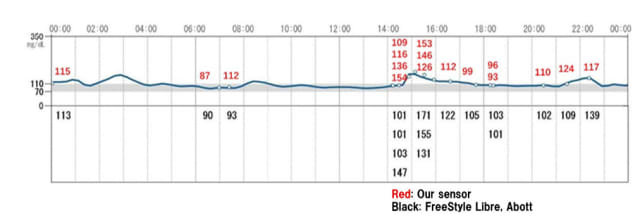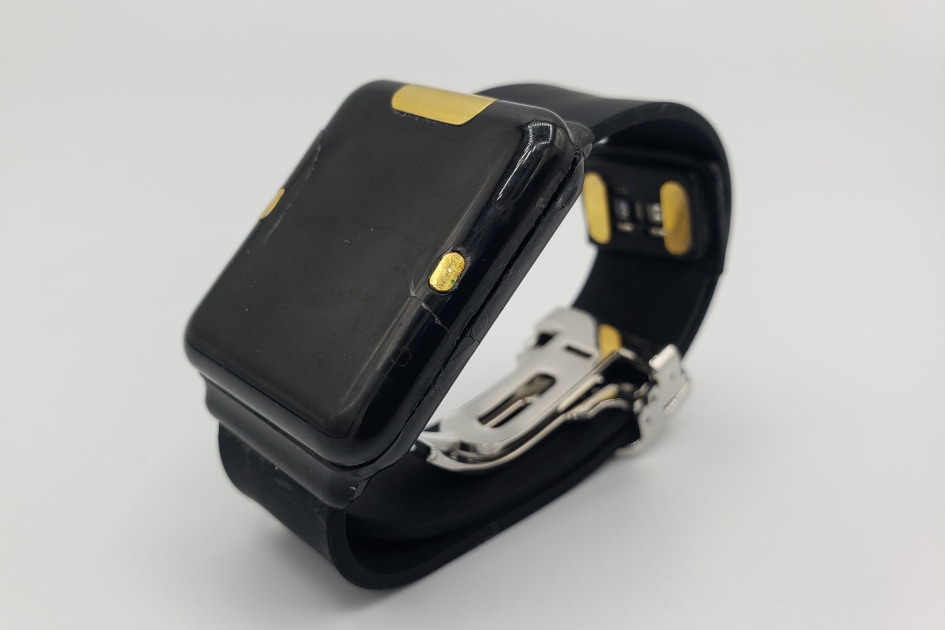
Quantum Operation Inc
Quantum Operation provided a sample of its data compared to that made by a commercial finger prick monitor, FreeStyle Libre. And at this point, there seems to be a noticeable variation between wearable and Libre. This, for now, can be an obstacle for those who rely on accurate blood glucose readings to determine insulin dosage.
Non-invasive glucose monitoring is a kind of holy grail for the medical industry, as well as for major wearable brands. After all, one in ten Americans is diabetic, and that number tends to increase as the obesity crisis continues to increase. To maintain their health, diabetics today need to have regular blood tests with a finger prick or use an implanted glucose monitor. In the past five years, companies like Dexcom and Abbott have found ways to connect these monitors to smartwatches for easy tracking.
Naturally, the wearables industry is looking for an easier and less invasive way to do this to try to steal some of that lunch. Unfortunately, no company has been able to successfully demonstrate a functional version of this technology, at least not in a commercial standard. In 2017, a company – PKVitality – came to CES with a watch that had a series of 0.5 mm high needles on the back of the watch that collected interstitial fluid from its skin. But this hardly counts as non-invasive.
Apple has reportedly been working on a blood sugar monitoring platform since before Steve Jobs died. Rumors emerged in 2017 that the company had a laboratory dedicated to looking for ways to monitor blood sugar through a wearable. In 2018, AppleInsider found a patent that the company had filed, related to the use of absorption spectroscopy to monitor blood glucose levels.
This secretive team was apparently reinforced by former employees of C8 MediSensors, a company that failed to accomplish this task at the beginning of the past decade. He raised $ 60 million in investments from companies like GE, but was unable to create a functional product before closing in early 2013. One Technical review of MIT The 2014 company profile said that the C8 simply couldn’t solve the variability problem – where readings vary from person to person – before it ran out of money.
A technique called Raman Spectroscopy has shown promise both in the example above and in other projects. In 2018, a group of researchers from the University of Missouri and MIT found that a laser, using a fiber optic cable, could be used to monitor glucose when pressed against the wrist. At the time, the researchers said the system could offer readings comparable to a finger prick test.
There is still a long way to go before we are able to see this type of technology in a functional product, even more before we are in one that we want to buy. But if Quantum can demonstrate that it has avoided the pitfalls that some of its rivals have already reached and that its technology is accurate enough, it can be very exciting.
Of course, being a fully virtual CES, it is even more difficult to accept the company’s fantastic claims at face value. If we were on the show in person, we would be able to test the device for ourselves and speak to the founders face to face. It is important to note, too, that there is – yet – no peer-reviewed or otherwise externally validated science to support this specific technology and its application. We cannot make any serious judgments about this technology yet, other than to say that if Quantum Operation can make its point, then we may be on the verge of a very exciting time for wearables.
